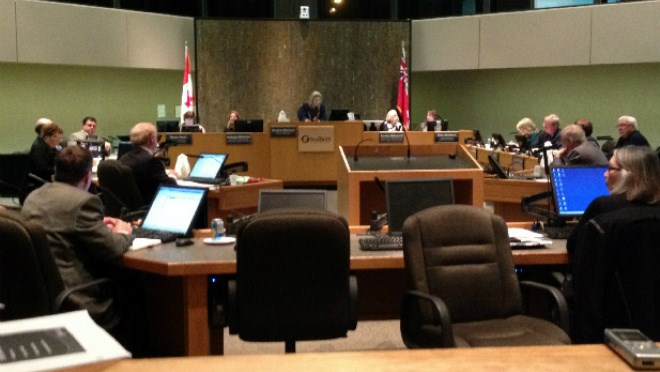That's because cities are viewed as having deep pockets when it comes to compensating accident victims.
In one case a few years ago in southern Ontario, a man who had been drinking – even had a beer in his lap while he was driving – blew threw a stop sign and caused a serious accident. The judge in the case ruled the municipality had to pay the bulk of the award because was partially responsible since the signage alerting drivers about the stop sign was inadequate.
Joint and several liability is particularly costly in Ontario for municipalities because of no-fault vehicle insurance rules. With lawsuit awards usually capped at $1 million for car insurance companies, plaintiffs often will include cities because there's no limit in place on what they can be forced to pay.
That's driving up municipal insurance costs across the province, including Sudbury. Premiums are up this year by 40 per cent in the city's police budget, almost 55 per cent in building services, 37.1 per cent in waste collection, 48.6 in Ontario Works, 40.3 per cent in children's services and 29.1 per cent in emergency services.
In dollar terms, rising premiums cost local taxpayers $300,000 in added costs this year alone. AMO has long lobbied for reform, and there was hope the new Liberal majority government would be receptive.
But in his remarks to delegates meeting this week in London, AMO president Russ Powers said they had been informed that change was not coming any time soon.
“This week the Ontario government informed AMO that it would not act on this,” Powers said, describing the current rules as “immoral and wrong.
“Other provinces have introduced sensible limits on municipal liability and protections for property tax payers. We won’t stop until we get that done.”
While not ruling out changes, Attorney General Madeleine Meilleur told the Ontario Legislature in July the government wants to ensure that whatever changes they make won't end up hurting victims or have other unintended consequences.
That's what happened under the no-fault insurance rules, which were aimed at slowing the rise in automobile insurance rates. Another example is a Supreme Court of Canada ruling that capped general damage awards at $100,000, and tied it to inflation. That prompted judges to look for other parties who could pay compensation to accident victims. So reform will take time, Meilleur said.
“Legal liability reform is an important and complex issue,” she said, in response to a question from PC MPP Randy Pettapiece. Whatever the province does, she said “there will be winners and losers. It’s a very complex matter, and we want to make sure that we have it right before we move forward.”
Ontario is reviewing rules used by Saskatchewan, she said, to see whether they could work here. Under that model, “if there is a shortfall because one defendant is insolvent and the plaintiff’s own negligence contributed to the harm, the shortfall is divided among the remaining defendants and the plaintiff, in proportion to their fault,” says a post on AMO's website.
“Another model will limit municipal liability for negligence in road maintenance to two times the proportion of damage,” Meilleur said. “It could look very simple for some of us, but it’s a very complex issue. Indeed, if this bill is passed, (as I said) there will be winners and losers, and that’s what we have to consider before moving forward with it.”
Join Sudbury.com+
- Messages
- Post a Listing
- Your Listings
- Your Profile
- Your Subscriptions
- Your Likes
- Your Business
- Support Local News
- Payment History
Sudbury.com+ members
Already a +member?
Not a +member?
Sign up for a Sudbury.com+ account for instant access to upcoming contests, local offers, auctions and so much more.
